Featured Comment
I’ve made this a few times and it’s quite nice. I’ve lowered the salt a tiny bit to get it perfect for me. Tasty and love it for breakfast!
– Robert
Why settle for the same miso soup and clear soup routine when kakitatamajiru offers the most satisfying egg swirl technique.
This Japanese egg drop soup takes fewer ingredients than most and hides one timing secret that makes the eggs bloom beautifully.
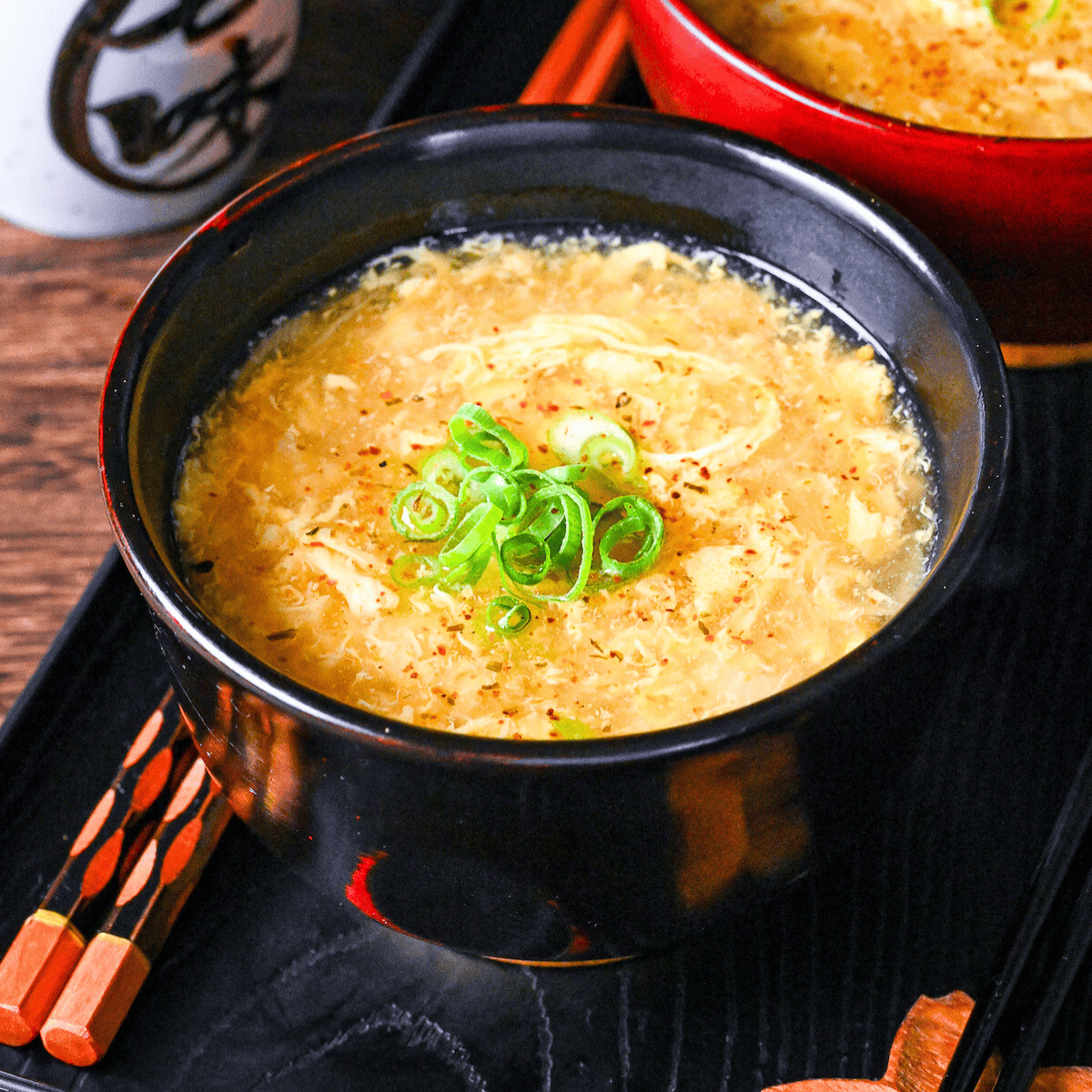
Kakitamajiru
Recipe Snapshot
- What is it? A Japanese-style soup with a delicate dashi base with swirling egg ribbons.
- Flavor profile: Light, clean, savory.
- Why you’ll love this recipe: The egg swirl technique gives her that satisfying “I actually know how to do this” feeling you crave when learning Japanese cooking.
- Must-haves: Dashi stock, Eggs, Potato starch (but you can use other starches too)
- Skill Level: Easy
- Suitable for Meal Prep? Dashi stock only.
Summarize & Save this content on:

What is Kakitamajiru?
Kakitamajiru (かきたま汁) is Japan’s take on egg drop soup. Instead of a heavy broth, it uses light, savory dashi stock as the base, which gives the soup a clean flavor while still being full of umami. Into this broth, beaten eggs are slowly streamed to create delicate ribbons that float throughout.
Its name is literal: “kaki” (stir), “tama” (egg), “jiru” (soup). Like egg okayu and zosui, kakitamajiru belongs to a family of dishes that highlight comfort and nourishment over heaviness.
Kakitamajiru VS Chinese Egg Drop Soup
You might wonder, “isn’t this just Chinese egg drop soup?” Not quite. Both swirl beaten eggs into hot broth, but the base and flavor change everything.
- Kakitamajiru (Japan): built on light dashi stock and thickened with potato starch or kudzu starch. It stays delicate, seasoned simply with soy sauce.
- Chinese Egg Drop Soup: relies on chicken stock, thickened with cornstarch, and often finished with white pepper for a bolder, heartier taste.
I love them both, but in short, kakitamajiru is simpler and lighter, perfect for weeknights when you want comfort without heaviness.
Egg Drop Soup Ingredients

- Dashi stock: For this recipe, use classic awase dashi or go plant-based with kombu-shiitake dashi. Dashi packets are a perfectly legit weeknight shortcut that still tastes authentic. You can pick up kombu/bonito or dashi packets at Asian grocers.
- Potato starch (katakuriko): You’ll find it at Asian markets and in the baking aisle of many grocers. If you’re out, cornstarch works with a slightly cloudier, more matte look, tapioca starch stays clear but can feel a touch bouncy. Both are perfectly acceptable swaps though.
- Japanese soy sauce (koikuchi shoyu): This is the everyday Japanese soy sauce. Want a paler broth? Use usukuchi (light) shoyu! It’s lighter in color but saltier.
Substitutions
- Vegetarian: Use vegan dashi made with dried mushroom and kombu seaweed instead.
- Gluten free: Tamari soy sauce or gluten free soy sauce.
- Japanese leek substitute: Regular leek or simply omit.
Have trouble finding Japanese ingredients? Check out my ultimate guide to Japanese ingredient substitutes!
How to Make My Kakitamajiru
Before you start: Prepare your dashi stock either using my homemade dashi recipe or making one with dashi packet or instant dashi powder.
If you prefer to watch the process in action, check out my YouTube video of this kakitamajiru recipe!
i. Pour the dashi into a saucepan, add soy sauce and a small pinch of salt, and bring it just to a gentle boil over medium heat. Reduce to a steady simmer so the seasoning dissolves cleanly without driving off aroma.
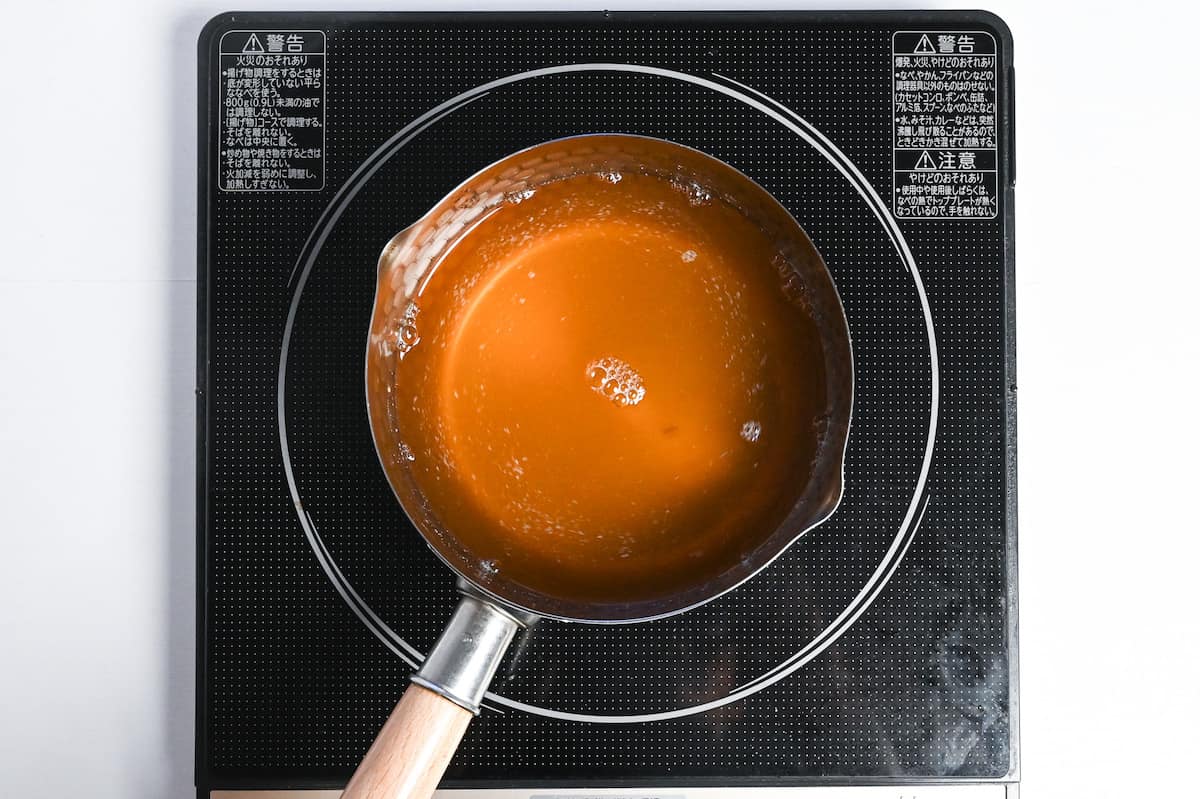
ii. Taste and adjust saltiness now. Different dashi bases vary, so start light and build up. If it tastes too intense, splash in a little hot water to balance.
For a classic, light broth use awase dashi (kombu + katsuobushi). Niboshi (dried small fish) makes bolder dashi, and for vegetarian nights, kombu-dried shiitake dashi is great.
If you’re short on time, dashi bags/packets (steep-and-strain) deliver clean umami with minimal fuss.
i. Slice the white part of a Japanese leek on the diagonal.

Diagonal slicing increases surface area so the leek cooks faster and releases more flavor, making it ideal for soups and hot pots. Hold the leek at roughly a 45° angle and slice to the same thickness for tidy ovals that wilt evenly.
ii. Then add it to the simmering broth. Let it soften until the edges turn translucent and sweet, 1-2 minutes. If you only have scallions, use the thicker white/light-green parts and slice the same way.
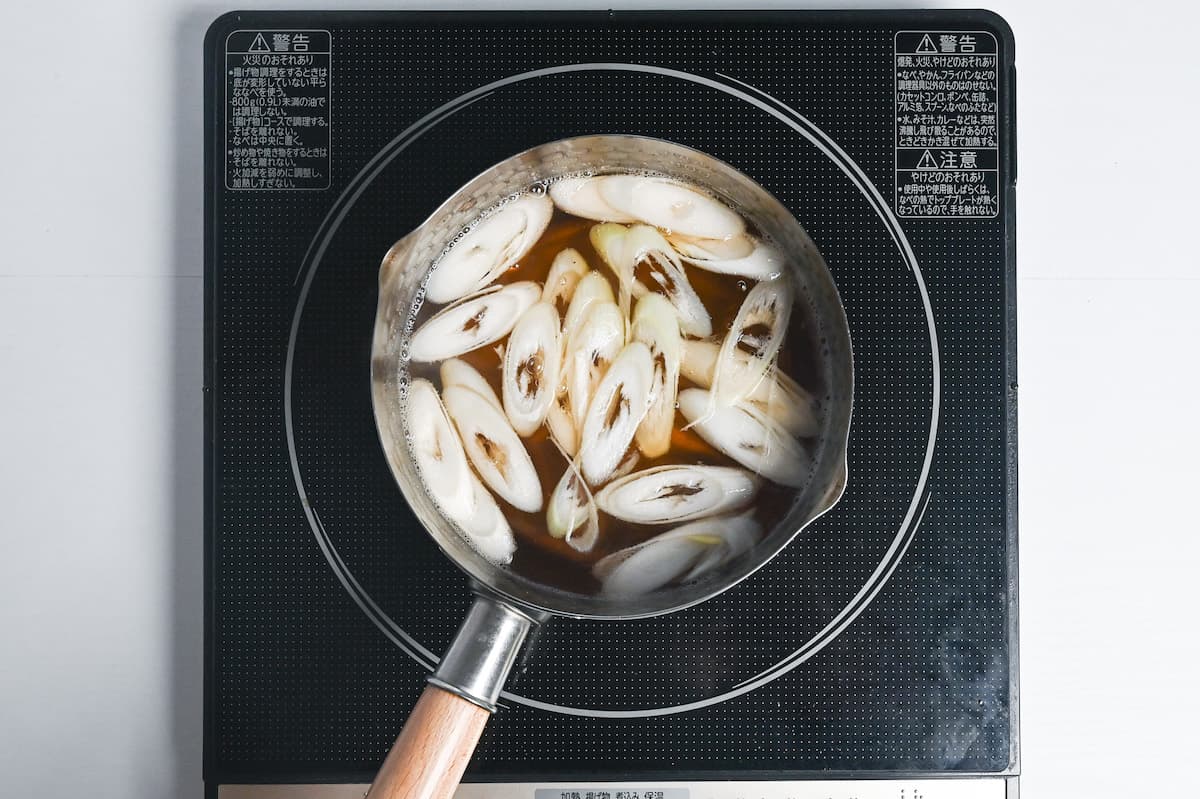
i. In a small bowl, stir potato starch with cold water until perfectly smooth (starch sinks fast so stir again right before use). Cold water keeps it lump-free, and hot liquid would seize the starch into clumps you can’t whisk out. Aim to make only what you need so it doesn’t settle and harden while you cook.
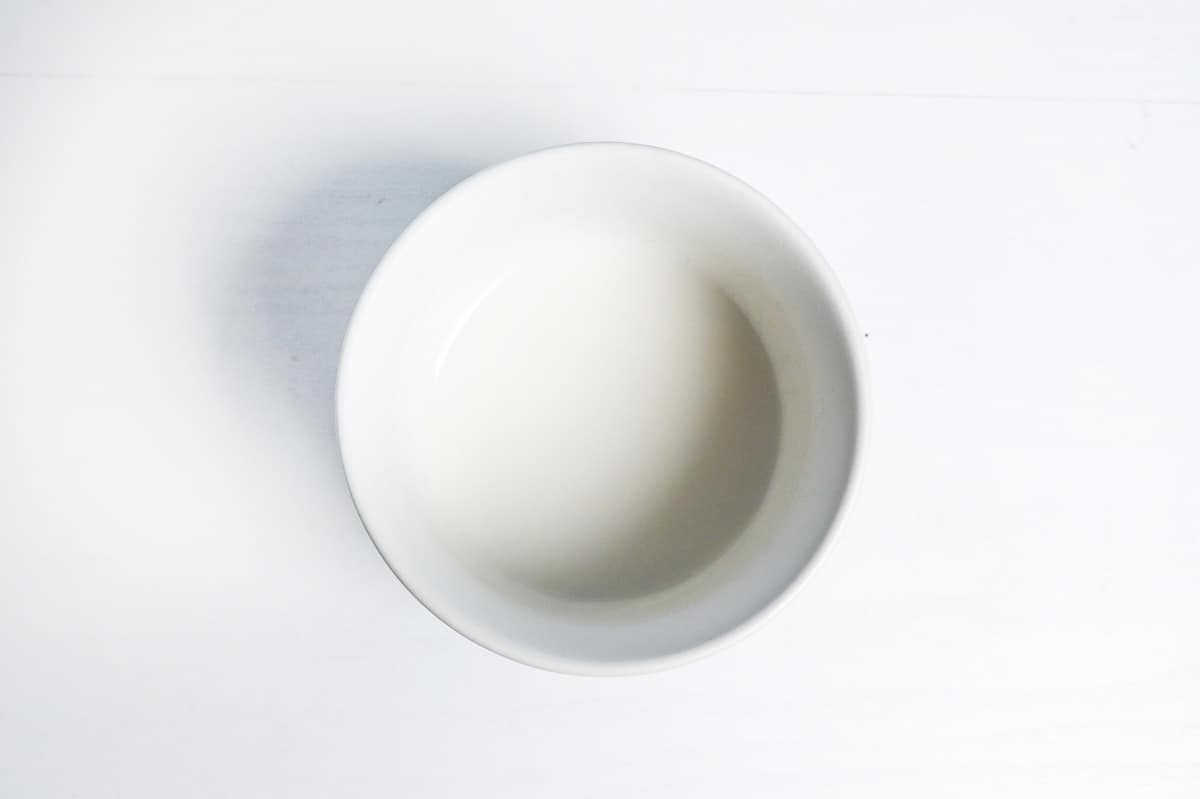
A light starch thickening slightly increases the broth’s viscosity so the eggs form delicate strands and stay suspended instead of breaking into wisps or sinking. This is the core technique behind silky egg-drop-style soups.
Potato starch thickens at lower temperatures and very quickly, which is perfect for finishing clear soups right before serving. Cornstarch works too (1:1 by volume) but sets a touch more slowly and is a bit sturdier if you plan to hold the soup longer. Either will give you fine ribbons when used as a slurry.
ii. Lower the heat to a bare simmer and drizzle in the slurry while stirring the pot gently. The broth should turn lightly glossy in about 30-60 seconds. If it thickens too much, whisk in a splash of hot water. Keeping the heat modest here prevents the starch from clumping or thinning back out.
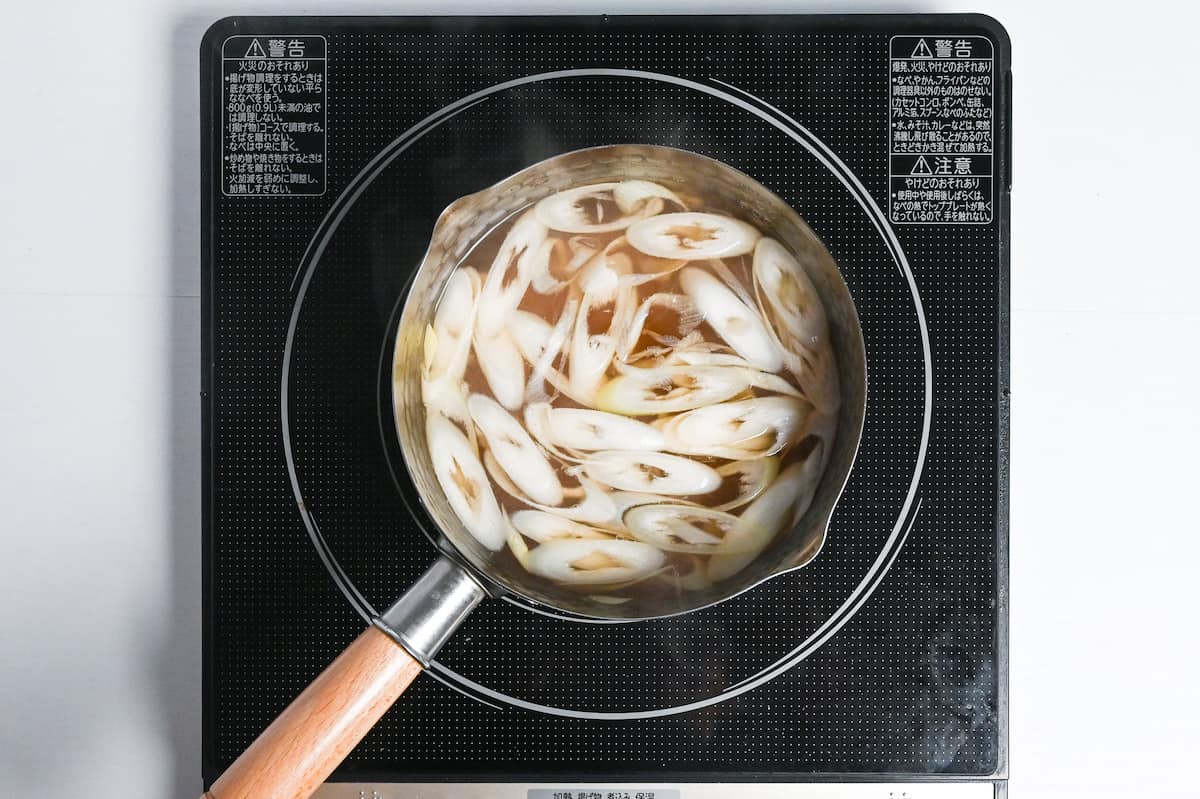
i. Crack the eggs into a jug and whisk until the yolks and whites are fully unified and fluid. A pourable container gives you control later for the thinnest ribbons.
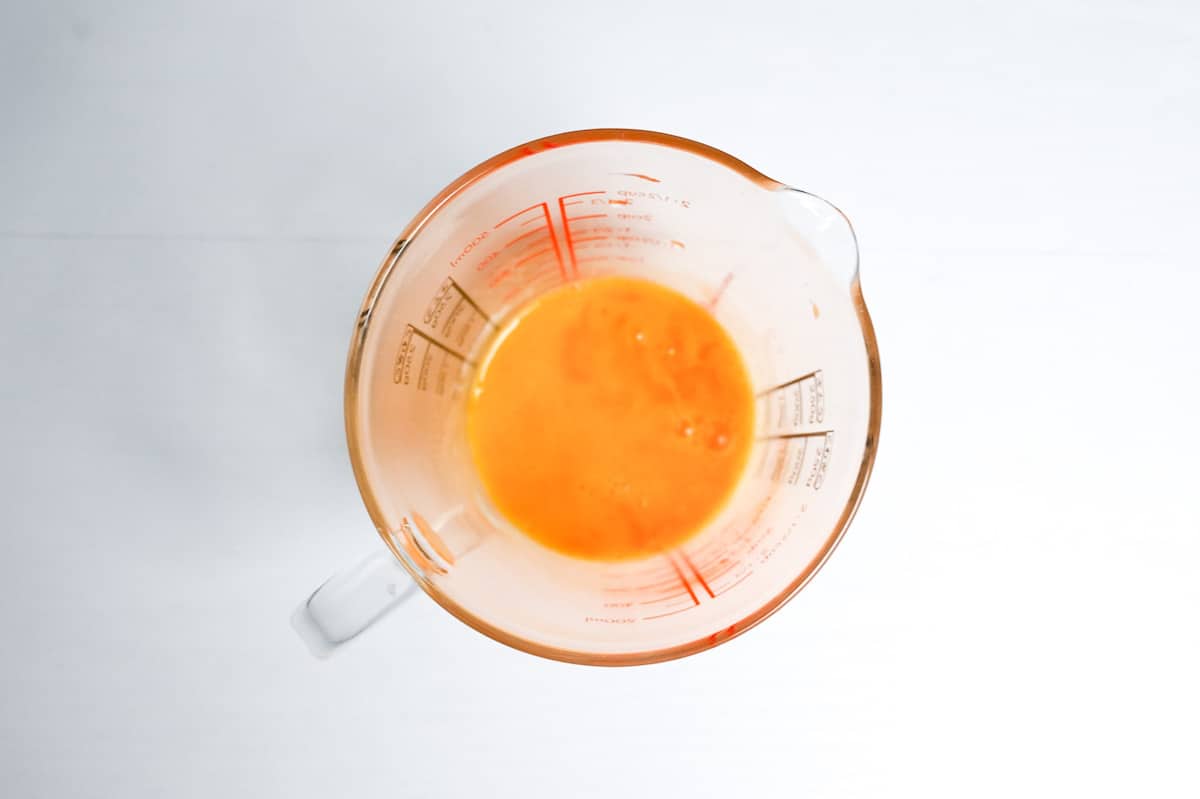
ii. Bring the thickened broth back to a gentle simmer (90-95℃ / 194-203°F). Stir the soup in one direction to create a slow whirlpool and pour in the eggs in a thin, steady stream, about one-third at a time.
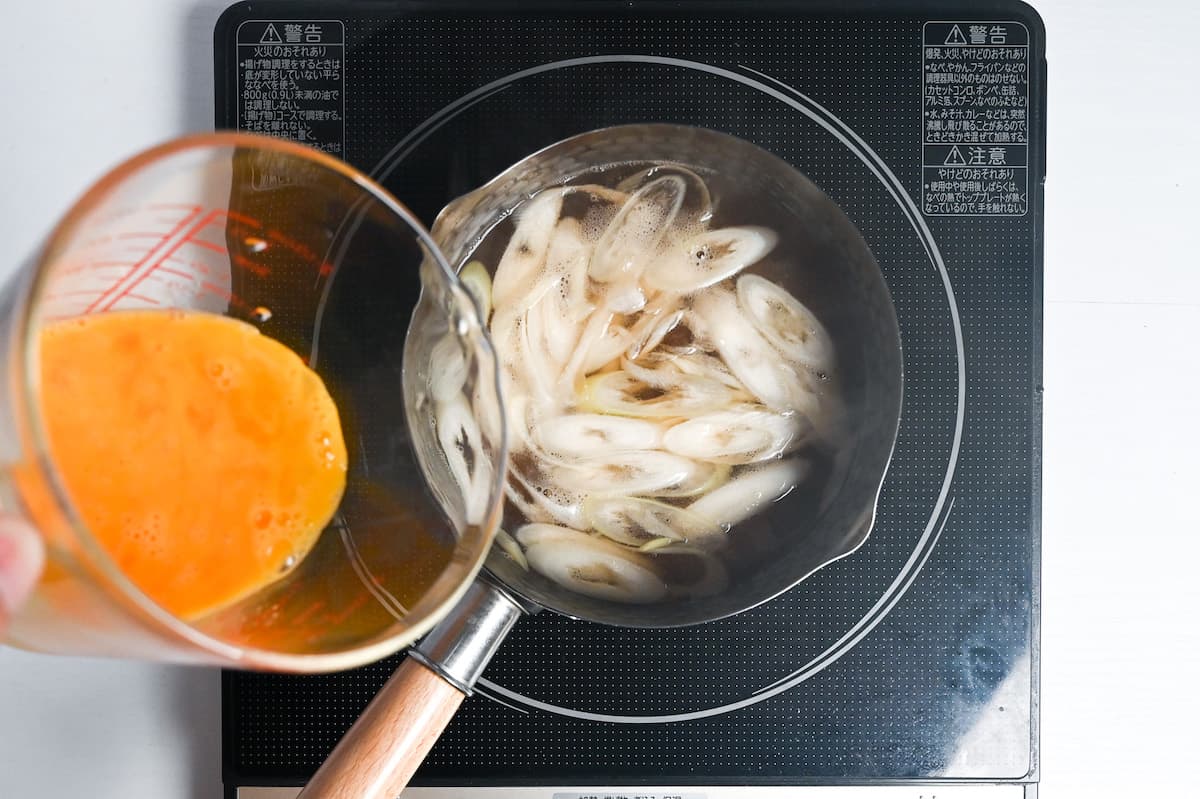
iii. Pause briefly between additions to let the surface return to a simmer so the ribbons set in seconds. You should see tender “petals” forming rather than big clumps.
iv. Give the pot one or two gentle stirs to separate any large sheets into ribbons, then turn off the heat. The texture should be tender and silky, not rubbery.
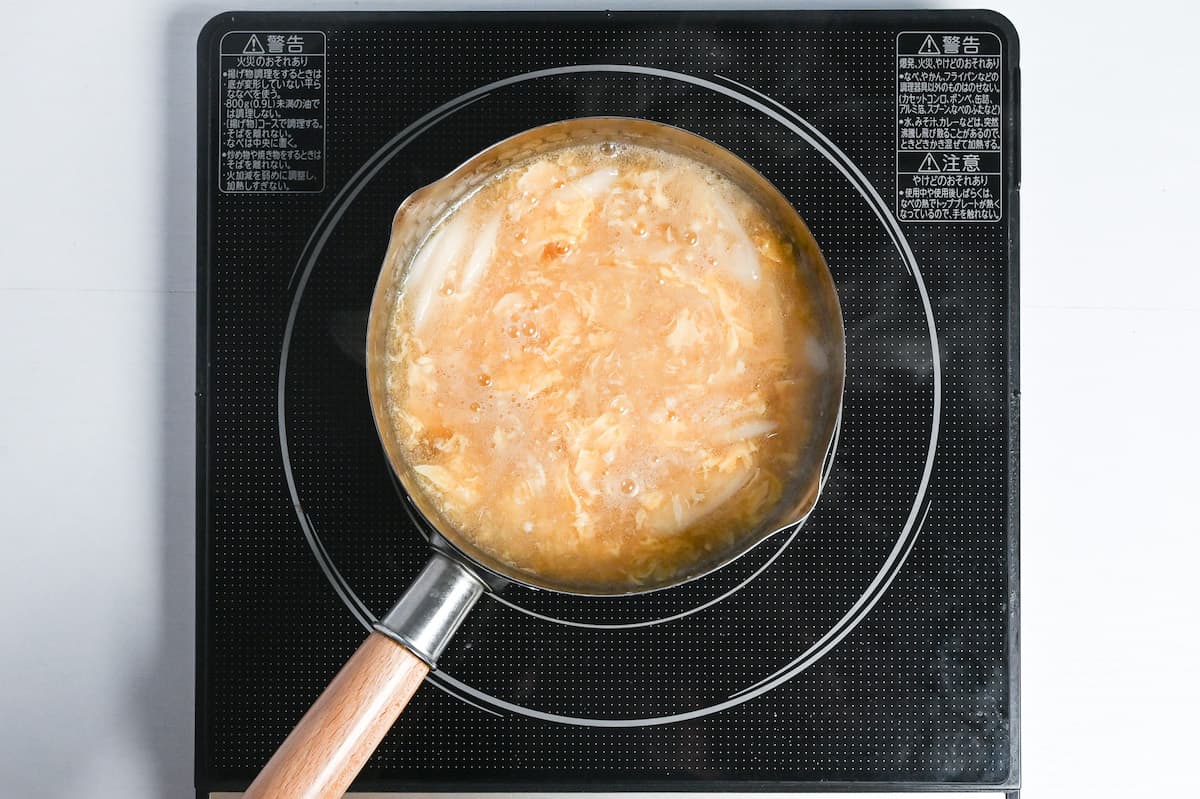
Ladle into warm bowls and top with chopped green onion and a pinch of shichimi togarashi. Serve immediately while the ribbons are soft.
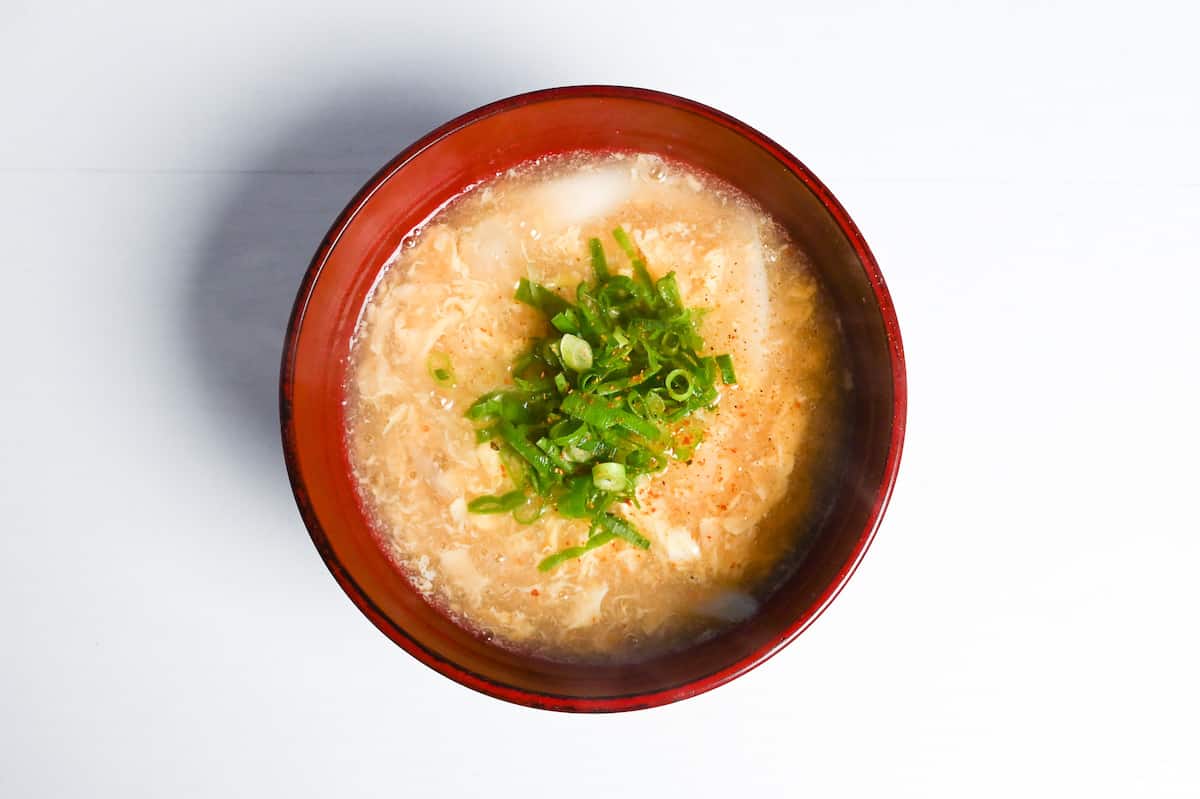

Essential Tips & Tricks
- Drizzle the slurry into a simmering broth while stirring.
- Bring broth back to a simmer (90-95℃ / 194-203°F), create a slow whirlpool, and pour eggs in a thin, steady stream from 5-8 cm (2-3 in) above the surface.
- Add eggs in thirds, pausing for the simmer to resume between pours. Wait 5-10 seconds before a gentle stir to keep ribbons intact.
With these simple tips in mind, you’re set for success every time you make kakitamajiru.
Storage & Meal Prep
Fridge: Airtight container, cool quickly in shallow container. 1-2 days for best texture. This recipe is not suitable for freezing.
Meal Prep: Make dashi stock ahead and store in the fridge for up to 5 days.
Reheating: Gently rewarm over low-medium heat, stirring. Avoid a hard boil to keep ribbons tender and reheat leftovers only once.
What to Serve With This Recipe
- Sake Shioyaki (Grilled Salted Salmon)
- Buta no Shogayaki (Ginger Pork)
- Spinach Ohitashi Salad
- Kyuri Asazuke (Quick Pickled Cucumber)
Kakitamajiru Q&A
You can, but the flavor shifts away from classic Japanese profile. Also, make sure to use unsalted chicken stock (not chicken bouillon) as dashi stock is not salted.
The base was too thin or you stirred too soon. Slightly increase the amount of slurry next time and wait a few seconds after pouring before a gentle stir.
Overcooking causes sulfur notes. Keep heat gentle after the eggs set and serve promptly.

More Japanese Soup Recipes
Want to discover incredible flavors from Japan? Explore my handpicked selection of the best Japanese soups to try at home!
Did You Try This Recipe?
I would love to hear your thoughts!
💬 Leave a review and ⭐️ rating in the comments below. 📷 I also love to see your photos – submit them here!

Kakitamajiru (Japanese Egg Drop Soup)
Ingredients
- 500 ml dashi stock use plant-based dashi for vegetarians
- 1 tsp Japanese soy sauce (koikuchi shoyu) or light (usukuchi) soy sauce, GF tamari
- 1 tsp salt fine sea salt preferred
- 30 g Japanese leek (naganegi) white part, diagonally sliced
- 1 tbsp water cold, for slurry
- 1 tbsp potato starch (katakuriko) or cornstarch/tapioca starch
- 2 eggs
- finely chopped green onions to garnish
- Japanese chili powder (shichimi togarashi) optional garnish
My recommended brands of ingredients and seasonings can be found in my Japanese pantry guide.
Can’t find certain Japanese ingredients? See my substitution guide here.
Instructions
- Pour 500 ml dashi stock into a saucepan and mix in 1 tsp Japanese soy sauce (koikuchi shoyu) and 1 tsp salt. Place the saucepan on the stove and bring to a boil over a medium heat. (Taste test the broth at this point and add more soy sauce if necessary.)

- Once it starts to boil, add 30 g Japanese leek (naganegi) and reduce the heat to simmer.

- In a small bowl, mix 1 tbsp potato starch (katakuriko) with 1 tbsp water to make a slurry.

- Drizzle the slurry into the broth and mix thoroughly.

- Crack 2 eggs into a pourable container and whisk until combined.

- Increase the heat and return the broth to a boil. Once boiling, drizzle in the whisked egg one-third at a time. The egg will lower the temperature of the broth so wait for it to start bubbling again before adding the next third.

- Gently mix the soup a few times and then remove it from the heat.

- Pour into serving bowls and sprinkle with finely chopped green onions and Japanese chili powder (shichimi togarashi).

- Enjoy!
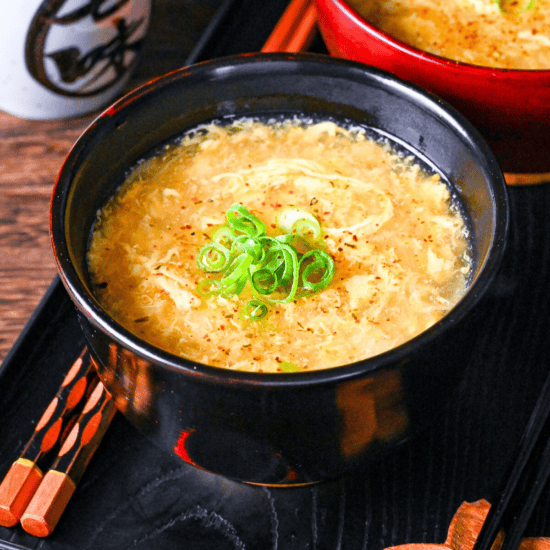




I’ve made this a few times and it’s quite nice. I’ve lowered the salt a tiny bit to get it perfect for me. Tasty af land loce it for breakfast!
Hi Robert, thank you so much for the feedback and rating! Glad you enjoyed the recipe 🙂
I appreciate the explanation of how Japanese and Chinese egg drop soups differ!
Hi Jan,
Thank you so much for your comment! I’m glad you enjoyed the content! 🙂
Yuto